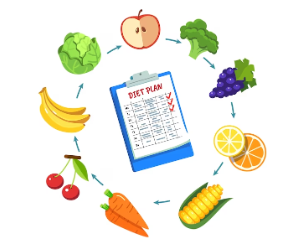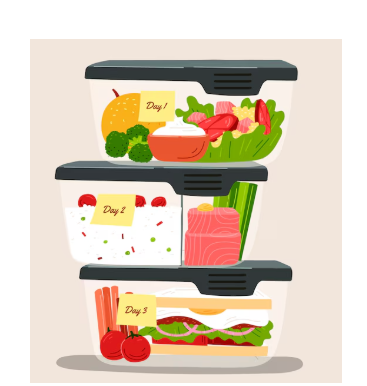By: Geraldus Sigap
Managing diabetes effectively requires more than just medications or regular check-ups. A well-balanced diet is one of the most powerful tools to keep blood sugar levels in check and maintain overall health. Eating the right foods, in the right portions, at the right times can make a significant difference in managing diabetes and preventing complications. But what does a diabetes-friendly diet look like, and how can you incorporate it into your daily life?

When you have diabetes, your body either does not produce enough insulin or cannot effectively use the insulin it produces. Insulin is a hormone that helps your body regulate blood sugar levels. The foods you eat play a critical role in this process because they are broken down into glucose, which enters the bloodstream.
A diabetes-friendly diet focuses on foods that have a minimal impact on blood sugar levels while providing essential nutrients. This means prioritizing whole, unprocessed foods that are rich in fiber, lean protein, and healthy fats while limiting sugars and refined carbohydrates.
A diabetes-friendly diet is not about deprivation or cutting out all your favorite foods. It is about making smarter choices and finding balance. Here are the key components of a diabetes-friendly diet:
- Focus on Fiber-Rich Foods
- Fiber slows the absorption of sugar into the bloodstream, helping to maintain steady blood sugar levels. Good sources of fiber include vegetables, fruits (in moderation), whole grains, legumes, and nuts. For example, choosing whole-grain bread instead of white bread or adding lentils to a salad can significantly increase your fiber intake.
- Prioritize Lean Protein
- Protein helps you feel full longer and does not raise blood sugar levels. Incorporate lean protein sources such as chicken, turkey, fish, eggs, tofu, and low-fat dairy into your meals. Plant-based protein sources like beans and lentils are also excellent choices.
- Include Healthy Fats
- Not all fats are bad. Healthy fats, such as those found in avocados, nuts, seeds, and olive oil, can improve heart health and support blood sugar management. However, portion control is important, as fats are calorie-dense.
- Control Carbohydrate Intake
- Carbohydrates have the most significant impact on blood sugar levels. Choose complex carbohydrates like whole grains, sweet potatoes, and quinoa over refined carbohydrates such as white rice, pasta, and sugary snacks. Understanding portion sizes and spreading carbohydrate intake evenly throughout the day can help avoid blood sugar spikes.
- Limit Added Sugars and Processed Foods
- Sugary drinks, packaged snacks, and desserts can cause blood sugar to rise quickly. Swap sugary sodas for water or herbal tea, and choose natural sweeteners like stevia if needed. Reading food labels to identify hidden sugars is also important.
- Stay Hydrated
- Drinking enough water is essential for everyone, especially those with diabetes. Proper hydration helps the kidneys flush out excess sugar and supports overall health. Aim for plain water as your primary beverage, avoiding sugary drinks.
Creating a diabetes-friendly meal plan does not have to be complicated. These practical tips can help you make the most of your meals:
- Use the Plate Method: Divide your plate into three sections: half for non-starchy vegetables, a quarter for lean protein, and a quarter for whole grains or starchy vegetables. This method helps you balance nutrients and control portions easily.
- Eat at Regular Intervals: Spacing meals evenly throughout the day helps maintain stable blood sugar levels. Avoid skipping meals, as this can lead to spikes or drops in blood sugar.
- Pair Carbs with Protein or Fat: Combining carbohydrates with protein or healthy fat slows down digestion and reduces blood sugar spikes. For instance, pair an apple with peanut butter or whole-grain crackers with cheese.
- Prep Meals in Advance: Planning and preparing meals ahead of time can help you avoid unhealthy choices when you are busy or tired. Keep diabetes-friendly snacks on hand, like raw nuts, yogurt, or vegetables with hummus.
- Experiment with Spices and Herbs: Flavor your meals with natural seasonings like cinnamon, turmeric, or garlic instead of relying on sugary sauces or salty condiments.
While no food is entirely off-limits, some should be consumed sparingly due to their impact on blood sugar levels:
- Sugary drinks like soda and energy drinks
- Refined carbohydrates like white bread, white rice, and pastries
- Fried foods and foods high in trans fats
- High-sodium processed foods like chips and canned soups
- Desserts like cakes, cookies, and ice cream

- Managing Blood Sugar with Smart Choices
- Managing diabetes is not just about what you eat, but also how you eat. Here are some additional strategies to support better blood sugar control:
- Portion Control
- Even healthy foods can raise blood sugar if eaten in large quantities. Use measuring cups or a food scale to ensure proper portion sizes, especially for carbohydrates.
- Track Blood Sugar Levels
- Monitoring your blood sugar before and after meals can help you understand how different foods affect your body. Use this information to make adjustments to your diet.
- Be Mindful of Alcohol
- Alcohol can affect blood sugar levels and interact with diabetes medications. If you choose to drink, do so in moderation and with food.
- Consult a Nutritionist
- A nutritionist can provide personalized advice based on your preferences, lifestyle, and health goals. They can help you create a sustainable eating plan that supports your blood sugar management.
For individuals with diabetes, understanding daily nutritional needs is essential for managing blood sugar levels and overall health. The recommended daily allowance for carbohydrates typically ranges between 45 to 60 grams per meal, depending on individual calorie requirements and activity levels. Protein intake should make up 15 to 20 percent of total daily calories, with a focus on lean sources like chicken, fish, beans, or tofu. Healthy fats, including unsaturated fats from nuts, seeds, and avocados, should comprise 20 to 35 percent of daily calories. In addition to macronutrients, individuals with diabetes should ensure adequate intake of micronutrients such as fiber (25 to 30 grams daily to support blood sugar regulation), potassium, magnesium, and vitamins like D and B12, which are important for overall health and reducing diabetes-related complications. These recommendations should be tailored to each person’s needs with the guidance of a nutritionist or healthcare provider.
At RS Abdi Waluyo, we understand the importance of personalized care when managing diabetes. Our nutritionists are dedicated to helping you develop a diabetes-friendly diet that fits your unique needs and lifestyle. Whether you need guidance on meal planning, portion control, or navigating food choices, our experts are here to support you every step of the way.
Resources
- Nutrition and Diabetes | ADA [Homepage on the Internet]. [cited 2024 Nov 20];Available from: https://diabetes.org/food-nutrition
- What is a healthy, balanced diet for diabetes? | Diabetes UK [Homepage on the Internet]. [cited 2024 Nov 20];Available from: https://www.diabetes.org.uk/living-with-diabetes/eating/what-is-a-healthy-balanced-diet
- Healthy diet for diabetes | Diabetes Australia [Homepage on the Internet]. 2022 [cited 2024 Nov 20];Available from: https://www.diabetesaustralia.com.au/living-with-diabetes/healthy-eating/
